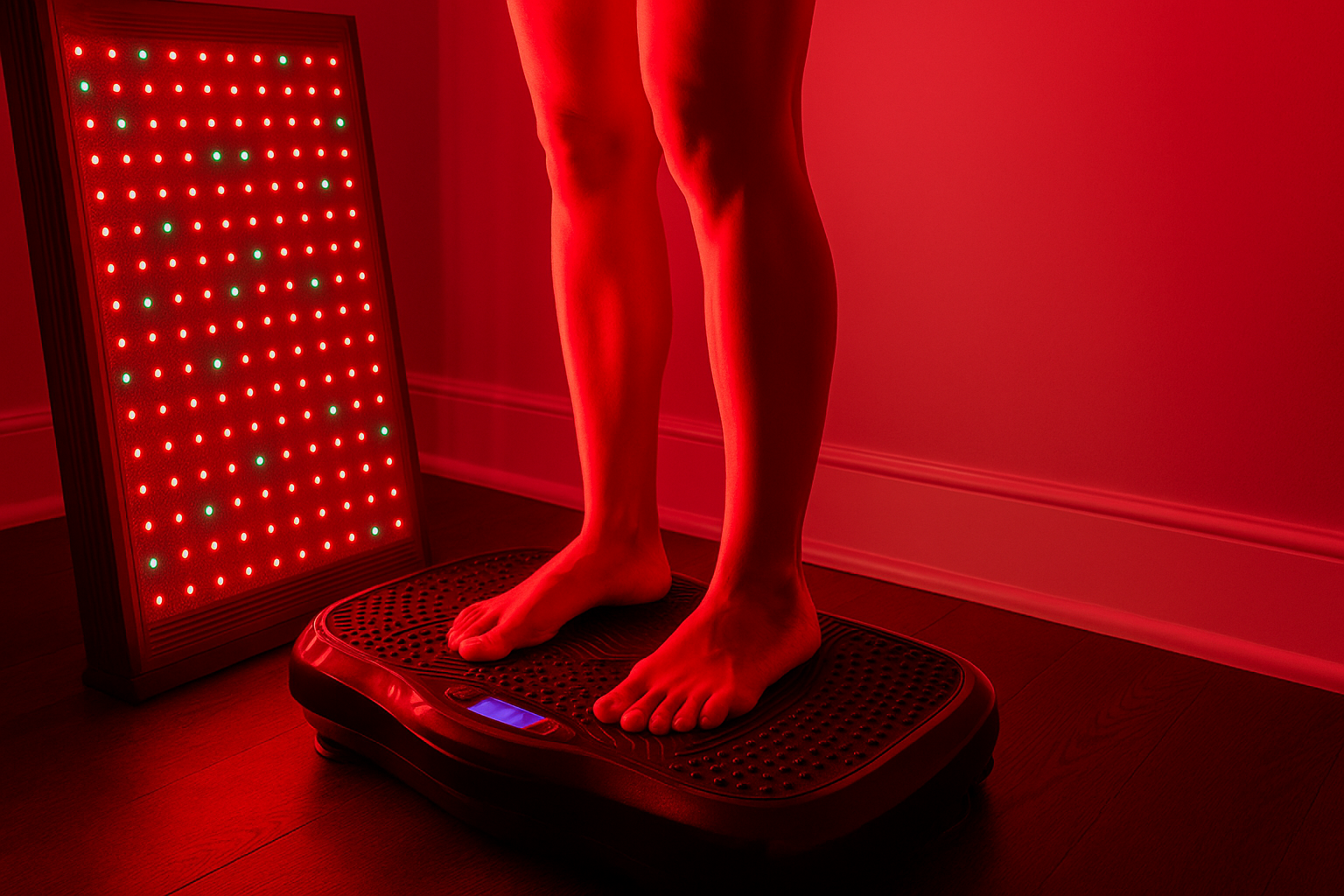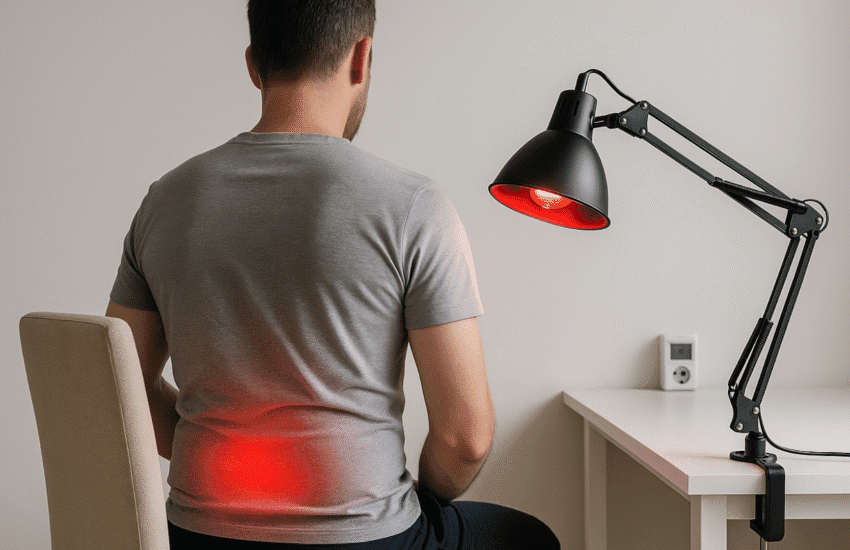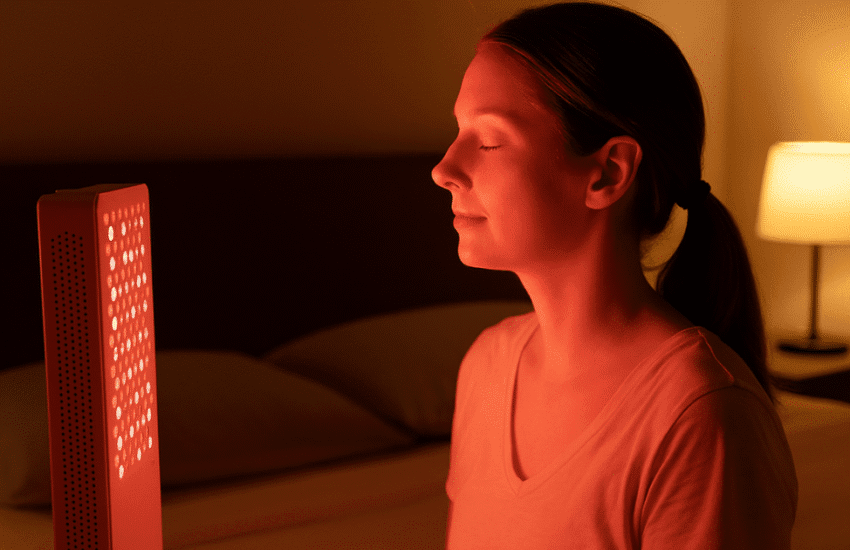Benefits of Red Light Vibration Therapy for Pain Management and Recovery
Red light vibration therapy merges two popular wellness techniques into one powerful treatment.
The gentle, restorative energy of red light works at the cellular level, while therapeutic vibrations help release tension, improve circulation, and ease pain.
Together, they create a synergistic effect that enhances the benefits of each therapy—supporting faster recovery, reducing inflammation, and promoting overall well-being.
This combined therapy is drawing attention not just for its convenience, but for its ability to address multiple wellness goals at once, from easing pain to improving sleep. Here’s a closer look at how it works and where it may help most.
What are the Benefits of Red Light Vibration Therapy?
Pain Management and Anti-Inflammatory Support
Red light vibration therapy has shown promising results in managing chronic pain conditions such as arthritis and fibromyalgia. The combination of red light and vibration penetrates deeper into tissues than light alone, potentially offering more effective relief.
Research suggests:
- Red light therapy (photobiomodulation) can reduce pro-inflammatory cytokines, potentially alleviating pain and swelling
- Vibration therapy can improve blood flow and oxygenation to affected tissues which may accelerate recovery.
The therapy’s anti-inflammatory effects can help reduce pain and stiffness in joints and muscles. Many users report noticeable improvements in their pain levels and overall mobility after consistent use of red light vibration therapy.
Muscle Recovery and Performance Support for Active Lifestyles
Many athletes and fitness enthusiasts turn to red light vibration therapy to help boost performance and speed recovery. This combined therapy has been shown to help:
- Support protein synthesis for muscle repair
- Reduce delayed onset muscle soreness (DOMS) by lowering inflammatory markers
- Improve training consistency by shortening recovery times.
By promoting faster healing of micro-tears in muscle tissue and reducing inflammation, red light vibration therapy can help athletes bounce back quicker from intense workouts or competitions. Some professional sports teams have even incorporated it into their regular training regimens.
Improving Circulation and Cellular Function Naturally
Healthy circulation is essential for delivering oxygen, transporting nutrients, and removing waste.
- Red light can help stimulate mitochondrial ATP production, giving cells more energy for repair
- Vibration therapy may improve microcirculation and lymphatic flow, supporting detoxification and reducing swelling
This “highway upgrade” for your circulatory system can strengthen tissue health and resilience, creating a solid foundation for long-term wellness
Cognitive Function and Mental Health
Recent research has revealed exciting potential benefits of red light vibration therapy for cognitive function and mental health. The therapy has been linked to improved mood and sleep quality, possibly because of its effects on melatonin production and circadian rhythm regulation.
Some studies suggest that red light therapy may have neuroprotective effects, potentially benefiting conditions like traumatic brain injury or neurodegenerative diseases. While more research is needed in this area, the initial findings are promising.
Choosing an At-Home Red Light and Vibration Device
There are plenty of options for trying photobiomodulation with vibration, from professional sessions to convenient home devices that match your schedule and budget.
- Professional treatments offer more power and full-body coverage.
- Home devices provide daily convenience but typically target smaller areas.
Key features to look for:
- Wavelength range: 630–660nm (surface), 810–850nm (deep)
- Coverage area and ease of use
Results take time, so patience pays off. Many people start noticing changes after several weeks of regular use. Keep a simple journal to track subtle improvements in pain levels, sleep quality, or how quickly you recover from workouts.
How the Technology Works at a Cellular Level
Those specific wavelengths mentioned earlier—630–660nm for surface work and 810–850nm for deeper penetration—don’t just rest on your skin. They’re absorbed by cellular components like cytochrome c oxidase in your mitochondria, sparking a boost in ATP production. More ATP means your cells have extra energy to repair, restore, and function at their best, according to photobiomodulation research.
This cellular boost underlies many reported benefits: reduced inflammation, faster recovery, and improved tissue function. The therapy’s gentle, non-invasive nature and minimal side effects make it easy to incorporate into daily life—whether you’re reading, meditating, or simply relaxing during a session.
Final Thoughts on Integrating This Therapy Into Your Routine
Red light vibration therapy brings together two powerful healing approaches that tackle pain, inflammation, and recovery from multiple angles.
By enhancing circulation, supporting cellular function, and working with your body’s natural healing processes, this therapy offers comprehensive wellness support without medications or invasive procedures.
Whether your goal is managing chronic pain, recovering from activity, or boosting cellular health, consistency is key. Regular sessions, tracked over time, can help you see meaningful results.
Start with regular sessions and give your body time to respond. While individual results vary, many people find this approach becomes a valuable part of their wellness routine.
As with any wellness approach, consult a healthcare provider to tailor a plan to your needs.
People Also Asked
What is red light vibration therapy?
Red light vibration therapy is a wellness treatment that combines red light therapy with vibration technology. It aims to stimulate cellular regeneration, reduce inflammation, and promote overall health by exposing the body to specific wavelengths of red light while applying gentle vibrations.
How does red light therapy work?
Red light therapy works by exposing the body to specific wavelengths of red and near-infrared light. These wavelengths penetrate the skin and interact with the mitochondria in our cells, stimulating increased production of ATP (cellular energy) and promoting various biological processes.
Is red light vibration therapy safe?
Generally, red light vibration therapy is considered safe for most people. However, people with certain medical conditions or those taking photosensitizing medications should ask a healthcare provider before starting treatment.
How often should I use red light vibration therapy?
The frequency of use depends on your specific goals and the device you’re using. Many experts recommend daily treatments, especially when starting out.
Always follow the manufacturer’s guidelines or talk to a healthcare professional for personalized advice.
Can red light therapy help with fat loss?
While red light therapy isn’t directly a weight loss treatment, some studies suggest it may help reduce fat cell size and control appetite hormones. However, it’s most effective when combined with a healthy diet and regular exercise.
How long does it take to see results from red light vibration therapy?
Results can vary depending on the person and the condition being treated. Some people report seeing improvements in skin appearance within a few weeks, while benefits for pain management or athletic performance may take longer to become noticeable.
Can I use red light therapy if I have sensitive skin?
Red light therapy is generally well-tolerated, even by those with sensitive skin. However, it’s always best to start with shorter sessions and gradually increase duration. If you experience any irritation, stop use and ask a dermatologist.
Are there any side effects of red light vibration therapy?
Side effects are generally mild and may include temporary redness or warmth in the treated area. Overuse could potentially lead to skin irritation.
It’s important to follow recommended treatment guidelines and stop use if you experience any adverse effects.
Disclaimer: This article is for informational purposes only and is not intended as medical advice. Red light vibration therapy may not be suitable for everyone. Always consult a qualified healthcare provider before starting any new therapy, especially if you have a medical condition, are pregnant, or are taking medication. Individual results may vary.


